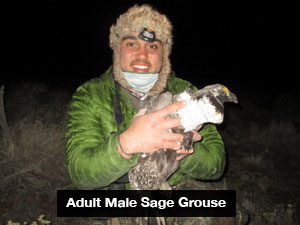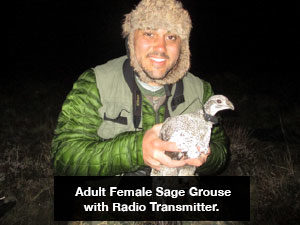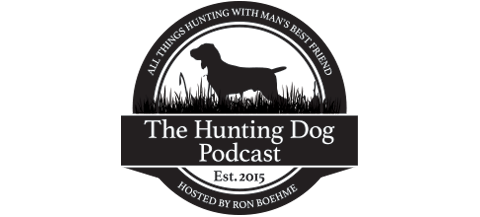Understanding the Greater Sage Grouse

Author: Quinton Merrill
Understanding the greater sage grouse (Centrocercus urophasianus) of the Western United States is essential for recognizing the beauty of the great plains; the history of grouse hunting; and the appreciation of a challenging hunt. Sage grouse occupy the sage brush ecosystem of the arid west and are native to Idaho, Nevada, Montana, Wyoming, California, and Colorado to name a few. You can find them nesting in thick spots of mountain big sage brush, or roosting quietly in the darkness of night in a clump of black sage. Wildlife biologists are continuously looking to answer questions about these birds, and why their numbers have been on a steady decline since the early 80’s. Multiple factors contribute to the sage brush habitat fragmentation, but why do we care about this topic, and what really motivates us to stay informed on such matters? Well, because we’re bird hunters, biologists, and naturalists—that’s what we do. As long as there are bird enthusiasts around the world we will protect the future of our natural resource traditions that bring people, hunters and non-hunters alike, together.
Sage grouse are considered an umbrella species, meaning that managing them also supports many other forms of wildlife including: pronghorn, mule deer, migratory songbirds, and other wide ranging species. A question that the University of Idaho researchers, along with many others, look to answer is how the greater sage grouse of the western plains respond to different rotations of spring/fall cattle grazing. The logistics of this study described in this article expand across many different agencies such as: the Idaho Fish and Game department, the Idaho Cattleman Association, United States Geological Survey (USGS), Bureau of Land Management (BLM), and many other organizations looking to answer the specific question of how sage grouse respond to different treatments of cattle grazing techniques.

Starting on February 26th, 2018 I had the privilege of joining a study located in rural Idaho; going off the grid to locate, trap, and monitor female nesting sites, radio collar new birds, and track their habits in a ten-year study. Projects that look to answer questions like these are important to so many different communities and cultures, especially those who believe in conservation and the fair use of natural resources. As a bird hunter and avian enthusiast, these are my stories and the perspective on the project; none of which directly reflect the opinions of the organizations mentioned in the former.
There are many different techniques involved in monitoring female sage grouse—none of which are helpful if in fact you do not master the art of finding the birds initially through a trapping technique called spot-lighting. To spotlight a female sage grouse is easier said than done. Two biologists go out into the pitch black of night on top of an ATV, and while one holds the spotlight, the other readies the net for capture. I will take this time to express just how frustrating this process can be; one night you may see ten plus birds, yet the next you will experience only the twinkle of a rain-drop, which looks deceivingly similar to the turquoise-colored shine of a sage grouse eye. For several days we trapped with no success until finally connecting with our first hen. The experience of holding a hen in-hand can only be equated, for me, as holding the future of conservation in your hands; knowing that with your help, this species has an ounce more chance at longevity on the landscape—it’s both an exciting and extremely humbling moment. While processing my first captured hen I was able to mirror her calm energy, almost as if she was accepting that she’d been caught and deserved whatever fate we should now bestow on her. Fortunately for her our intentions were honest, and the radio-collar transmitter was fitted with ease before carefully walking away from the ATV to place her gently on the ground. I smiled as I heard her wing-beat some minutes later while we finished collecting the rest of the field data.
There are many factors that contribute to the health and success of the greater sage grouse; the most obvious being brooding cover. Biologists have recognized that long-term conservation of sage grouse populations depends on protecting large, continuous blocks of viable sagebrush habitat (Braun et al, 1977). This is especially true for female brooding success. Comparatively in the suite of species, the greater sage grouse has a relatively low reproductive success rate. Comparing the clutch size of a ruffed grouse (14), the greater sage grouse has only about half the clutch size (7), leaving a challenge to turn around high numbers of yearlings for the fall season. Thus, in addition to the collaring and tracking of birds, we are also conducting vegetation surveys, insect biomass analysis surveys, and fecal sampling to aid in a graduate student on identifying correlations in using fecal and ceacal samples to determine sex and age of birds. These additional surveys aim to assess the condition of sagebrush habitat, and make suggestions that improve natural historical landscapes. Another point I may add is that this research would be extraordinarily more difficult without the support of the ranchers and cattleman in the area. With their adherence to this research, collecting data that may otherwise be difficult to obtain is achieved through their cooperation with the agencies involved. Speaking from personal experience, I will say that their hospitality and guidance while out here in the back country has been so very helpful.
Appreciating this unique grouse species is paramount for the survival of the species. With more people concerned about the proliferation of the species, ranchers, biologists, birders, and those who may never experience the sight of the greater sage grouse, but still consider its intrinsic value in this world, can expect this bird to be around for all mentioned groups to have in their future. The overall goal of this research study is to provide insight and recommendation on what is the most effective method for managing forgreater sage grouse. Whether you’re concerned about the brief sage grouse season and bag limit, or population dynamics, the overall goal of all involved is the same: we want future generations to have the privileges we had observing and pursuing these magnificent birds across the western plains.


Great article felt like I was talking to you and experiencing the hunt.